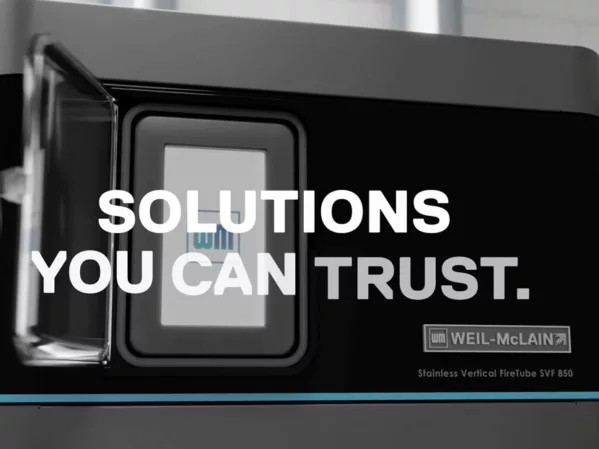With cloud computing and mobile devices providing more on-the-go access to complex data and systems, the power of business management software keeps on growing. What was once seen as something only for large companies is making its way to smaller operations and mom-and-pop shops. Running a business is challenging, and today’s contractors need to use every tool at their disposal to streamline their processes.
We recently had the opportunity to talk about business management solutions with Wayne Newitts, marketing director and construction software developer Dexter+Chaney. He shared his thoughts on today’s business management applications and the benefits for contractors.
Phc: How would you describe business management software or applications as they relate to plumbing and mechanical contractors?
WN: Every business needs to process information in some common and basic ways. Hours worked need to be tracked and turned into payroll. Bills need to be categorized and paid. Payments due need to be tracked (and sometimes tracked down). And so on. How contractors do this varies depending mostly on their size and on their technological sophistication. These days, nearly all contractors use computers to perform these tasks.
There are a couple of “dividing lines,” however, that separate contractors into different camps with respect to the type of software they use (and therefore the way they use it). The first group, made up of often smaller firms, use off-the-shelf and generic software products, such as Microsoft Excel, to store and organize business information. The second group invests in applications that are specific to their type of business – software programs for estimating, job cost accounting, project management, work order processing, service management and dispatch, etc. Finally, larger firms, or those who chose to invest in technology as a competitive advantage, tend to look for complete systems – software in which all the different applications for managing all the different aspects of their business work together and complement each other. Data entered into a system can automatically populate a budget for job cost accounting and in which operational applications, such as project and service management, share information with financial applications to give business managers a complete picture of the health of their company.
Phc: For businesses who haven't used management systems, what are reasons they should consider?
WN: When a contractor invests in industry-specific applications or complete systems, they graduate from the use of tools that simply store and organize data to the use of tools that turn data into actionable intelligence. All of the variables that predict the profitability (or potential losses) of a job, or a type of service work, can be interpreted by intelligent software applications and flag areas of risk and areas of potential improvement. These tools also streamline the flow of information. For example, information entered by a field technician as part of a work order can automatically trigger a purchase order or the creation of an invoice, without the need for duplicate data entry.
Phc: Is management software just for large companies?
WN: Historically, more sophisticated software applications and systems were prohibitively expensive for smaller firms. But, in just the past five or so years, this has changed substantially. The convergence of three waves of new technological advances has but powerful software tools into the hands of smaller companies, and put these tools into the hands of everyone within the company, from the accountants in the office to the technicians in the field.
Cloud computing has provided a means of delivering powerful processing and virtually unlimited data storage capacity to firms without the need for expensive computing hardware or devices. Mobile technology, specifically the tablet and smart phone, has extended the reach of the cloud to remote and mobile employees, such as field supervisors and technicians. And finally, software vendors have been redesigning software to take advantage of this new computing environment. One important collateral advantage of designing software to work equally well on a desktop, laptop, tablet, or phone has been the trend toward making software more intuitive and easier to use. All of these things are conspiring to create a level technology playing field for both the smaller and larger contractor.
Phc: Can you give an overview of Dexter+Chaney's work with business management applications?
WN: Dexter+Chaney began designing software specifically for contractors beginning in 1981, before the PC was anywhere close to being a household appliance, let alone a fixture in businesses. Starting with job cost accounting, we added applications to our Spectrum software platform that allowed contractors to manage all aspects of their business from one integrated system. One of the persistent features of our software is that we give business managers a comprehensive view of the overall health of their operations, and then make it easy for them to identify and drill down into areas that need attention, improvement, or adjustment. This was true when we were building reports in software before DOS was an operating system, and is true 33 years later with our cloud-based and mobile-friendly applications|
Phc: How have mobile devices and tablets impacted the world of business management applications?
WN: The obvious impact has been the ability to put information immediately and directly into the hands of the folks on the front lines who need it – whenever they need it. But, in addition to adding intelligence to job sites and service calls, software designed for mobile devices has created a better connection between the office and the field. With cloud computing as a supporting technology, mobile applications can be integrated seamlessly with a company’s primary business management system, giving managers an immediate and complete view of business operations, eliminating duplicate data entry, and enabling a streamlined flow of information which leads to a more streamlined flow of work.
Phc: Are you seeing more contractors using these systems on handhelds in the job site?
WN: Yes, roughly speaking, close to half of the contractors we work with have actively deployed mobile computing into the field for all the reasons listed: reating a more informed job site; Putting better and more information into the hands of the people making the key decisions about the work in progress; Giving managers a real time and holistic view of all operations; and Creating a smoother flow of information, leading to a smoother flow of work (and ultimately, of cash).|
Phc: What exciting developments have you seen in business management tools in the past year? What do you see coming in a year or two?
WN: The past year has seen the growth of apps for mobile devices that do more than standalone tasks, such as PM tracking or punch list completion. The advances in cloud-based software have let vendors serve up the full power of their complete enterprise software systems to a user on a tablet in a pickup truck at a job site. Exciting stuff! And, this is only the beginning of the changes that new cloud and mobile technologies are bringing.
In the next couple of years, look for two more exciting developments. With the ability to store huge amounts of data at increasingly smaller cost, software developers will be able to “mine” a company’s data and take business intelligence to the next level. While not exactly equivalent to the concept of “Big Data” that has become a buzzword, construction software will become more intelligent and more predictive, helping managers avoid problems before they materialize.
Secondly, software is becoming more integrated into the way we actually move and work throughout the day. Just as user interfaces to software have advanced beyond the keyboard and mouse into the touchscreen and voice recognition, software will start delivering an enhanced or “augmented reality” to users, reacting to what the user is seeing and doing and serving up relevant information via visual and audio interface. Think “Google Glass,” but designed with specific applications such as commercial HVAC repair or 3D realization of complex construction plans at a glance.
Phc: Do you have an example of a customer or contractor’s successes with implementing business management tools?
WN: We honestly have thousands of examples. Some can be found here: www.youtube.com/playlist?list=PL5AC6B94C5D460E18. Most success stories include common themes regarding the implementation of business management systems, such as Spectrum. The themes are: Improved communication between different departments within a company, particularly accounting and project management; More accurate job projections; Information from which to make business decisions and then track the results of these decision; Better cash flow through tighter financial controls and faster more accurate data processing; and Lowered overhead cost through automation tools and the elimination of paper and redundant processes. The list goes on.
Phc: Are there concerns for such software that businesses should consider when making a decision?
WN: These are a few points to consider:
• Are you ready to embrace change and new technology? Buying the software and having it implemented at your company is just the start. Everyone needs to embrace the technologies and use the applications.
• Are you using mission critical software that would be hard to move away from? Will it integrate with your new business management system? For example, many estimators are very tied to a particular estimating software (or an elaborate set of home-grown Excel spreadsheets developed over years). Will your new software be able to communicate with these?
• How much information and how many applications do you wish to put into the hands of your field staff? Does the business software offer mobile-friendly interfaces and apps that work as an extension of the system? Can they work in an offline mode for job locations that do not have internet connectivity? Will you let your employees use their own mobile devices (BYOD – Bring Your Own Device) – and if so, what procedures will you have in place for security and compensation?




